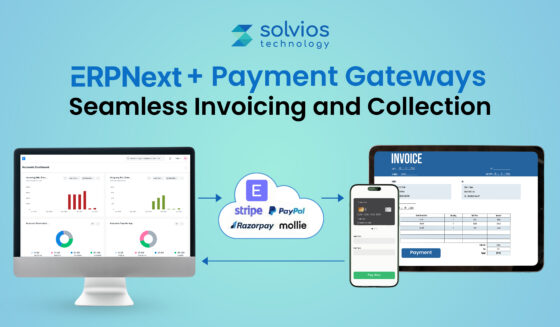
Introduction
Modern business is dynamic!
On the outside, it appears to revolve around seamless operations, but inside, operations are actually broken. Businesses today face operational friction due to fragmented systems and inefficient operations, which drain time and resources.
However, thanks to modern software solutions, we now have an answer. Microsoft Dynamics 365 is a unique tool for small and medium-sized enterprises that want to make their operations more efficient, improve their procedures, and get the most out of their investments.
Interestingly, Microsoft Dynamics 365 has the potential to drive 3x the ROI for mid-sized businesses.
Is it really possible?
Let’s find out as we learn more about driving success with D365 in the following sections.
ROI Benchmarks: Real Numbers, Real Trust
When integrating technology into your operations, you can’t trust options without real numbers. For decision-makers evaluating Microsoft Dynamics 365, the conversation is about the ROI (Return on Investment). Companies want proof that the investment pays off, not just in theory, but in practice.
Interestingly, D365 has delivered and stood up to the parameters of organizations. Here are some stats to back it up:
- Stats by Nucleus Research suggest that for every $1 spent on ERP/CRM tools, businesses get an average return of $16.97.
- A Forrester study revealed that organizations using Dynamics 365 for their sales operations reported a massive 215% ROI in three years of implementation. They were able to claim the investment within just seven months.
- A case study produced by B2Bdaily.com indicated that a UK-based business’s ROI went up by 40% when it started using Dynamics 365.
These numbers aren’t theoretical. They reflect what happens when strong platforms meet well-structured implementation.
Key ROI Drivers: Levers That Multiply Returns
AI & Automation
Microsoft Dynamics 365 implementation helps businesses automate moving parts of their workflow. It eliminates manual intervention by replacing it with simple automations across sales, service, and finance operations. The platform allows you to leverage automated lead scoring, chatbots/virtual agents, and SLA-aware routing to streamline workflows.
Automating different touchpoints of your workflow reduces errors and compresses cycle times. What’s more? It also helps you track the impact through lower handling time and cost per case, higher conversion, and better first-contact resolution.
Pro tip:
Target one aspect of your workflow first (inbound lead, MQL, SDR handoff) and automate different moving parts of your business.
Data Consolidation & Analytics
Faster decisions result in better ROI when they emerge from a centralized database. Microsoft Dynamics 365 recognizes that it stands out as a unique ERP/CRM solution. It helps unify customer experiences by integrating finance datasets and a model backed by Power BI dashboards.
It helps companies maintain consistent data and analytics. Having access to a single source of data also makes reporting faster, reduces the need for reconciliations, and improves planning.
Pro tip:
Set 5–7 “golden metrics” (DSO, pipeline coverage, order cycle time, gross margin, churn) and then work your way back to them to develop your analytics.
Agile Implementation (Faster ROI)
Short, outcome-focused sprints deliver value in weeks, not quarters. A sprint-to-MVP cadence, show-and-tell evaluations with business owners, and release trains that happen on time all help people use new things and make change less risky.
Watch time-to-first-value, sprint predictability, feature usage, and support tickets per release to ensure momentum.
Pro tip:
Every sprint should either remove a manual step or light up a KPI—if not, it’s not MVP material.
Customization & Integration
Tailor the platform to your business’s actual operations while avoiding brittle complexity. Use Power Platform apps/flows, vetted plugins, and APIs in finance, logistics, and marketing.
You can also leverage your data warehouse to eliminate swivel-chair tasks and rekeying. Expect cleaner handoffs, fewer integration failures, higher CSAT/NPS, and reduced shadow-IT spend.
Pro tip:
When it comes to ERP, the rule is simple: standardize where you can and customize where you compete (pricing, SLAs, compliance, regulatory reporting). Our Microsoft Dynamics Complete Guide for Businesses explains how to strike this balance to maximize efficiency and growth.
Want to multiply your ROI with the right strategies?
Reach out to us nowUse Cases: ROI in Action
Dynamics 365 earns returns for brands by removing friction from end-to-end operations. It helps businesses make clearer decisions and streamline operations.
Here’s how that value shows up where it matters.
Sales Efficiency
Dynamics 365 automates the customer sales journey, from lead capture to enrichment and handoffs. It automates onboarding, allowing sales reps to focus more on selling and less on managing systems. Access to predictive scoring and pipeline insights surfaces which accounts are warming up, which quotes need a nudge, and which activities actually move deals.
Additionally, access to sequences and guided selling reduces the acquisition journey for new team members while interconnected systems keep everything consistent. The net effect? Faster cycles, cleaner forecasts, and shorter onboarding.
Customer Service & CRM
Service wins on first response, resolution quality, and clean data. Dynamics 365 routes cases by skills and SLAs, pulling the right customer intent in the right parts of the sales funnel. Additionally, the ERP/CRM system also recommends knowledge to solve similar customer relationship problems.
It allows agents to manage the entire customer journey from a single screen, encompassing voice, chat, email, and social interaction. At the same time, the real-time dashboards display queues and trends that managers can address during mid-shift. Thanks to the streamlined approach in customer journey, the result is lower handling time and re-opens, removing the need to hire additional specialists for operations.
Operations & Field Service
With Dynamics 365, businesses get scheduling, inventory, assets, and work orders in one flow. Field service operators gain access to inventory, fulfillment capacity, and parts in real-time.
Dispatchers can also leverage the systems to optimize routes and improve delivery. Access to the entire field service and operation enables business owners to move their inventory effortlessly and utilize their talents where needed.
Dynamic 365 Implementation Framework: From Theory to Deployment
1. Set clear goals & KPIs:
Before integrating D365, focus on the milestones you aim to achieve with the ERP/CRM. Focus on a few key metrics like conversion, cost savings, and cycle time as you move ahead.
2. Start small with agile springs:
Don’t focus on automating all your operations. Focus on one part of your workflow first. Start small and deliver a working MVP in 2–4 weeks, review it with users, and then improve it based on their feedback.
3. Use AI, automation, and reporting:
Automate handoffs, enrich data, and try automating different parts of your workflow. Besides, don’t forget to schedule reports so teams have an idea of daily results.
4. Ensure training and adoption:
Train your team to adapt to the platform without any friction. Assign individual roles to every person and update the platform based on feedback.
5. Track, measure, and optimize:
Stand up live dashboards and Power BI reports. Review weekly. Keep what speeds work, fix what slows it, and retire steps that add no value.
6. Engage a partner for long-term ROI:
Once live, it’s time to govern the operations: review the backlogs, release calendar, and regular audits. Or, you could also partner with integration partners to streamline your operations.
Conclusion
Microsoft Dynamics 365 isn’t just an ERP/CRM platform; it’s a catalyst for small and medium-sized businesses. It helps you revamp part of your operations, without compromising on the possibilities of manual intervention.
Once integrated into the workflow, it helps you simplify operations to the next stage, while recovering the ROI.
Ready to witness 3x ROI? Contact Solvios Technology for a tailored Dynamics 365 ROI roadmap today!
Contact us Now!Frequently Asked Question
Microsoft Dynamics 365 is an ERP and CRM platform that streamlines operations, automates workflows, and consolidates data. By improving sales efficiency, customer service, and operational processes, businesses can achieve faster decision-making and reduce costs, often seeing up to 3× ROI.
Dynamics 365 automates repetitive tasks such as lead scoring, case routing, and data entry. This reduces errors, shortens cycle times, and frees employees to focus on high-value tasks, directly impacting efficiency and ROI.
Yes. Using an agile implementation framework, businesses can start small, deliver a Minimum Viable Product (MVP) in 2–4 weeks, and scale progressively. This ensures faster ROI and minimizes disruption during adoption.
Sales, customer service, operations, and field service teams benefit the most. Dynamics 365 provides tools for guided selling, case management, scheduling, inventory tracking, and performance analytics, all in one centralized platform.
Companies can track ROI using key metrics such as cost savings, cycle time reduction, conversion rates, and customer satisfaction. Real-time dashboards and Power BI reports allow continuous monitoring, optimization, and decision-making for maximum returns.
Tags
Related Blog
Want to get started with App Development?
These applications are acquiring enormous prevalence by offering hands-on enterprise mobility solutions for organizations around the globe.
Start A Conversation















